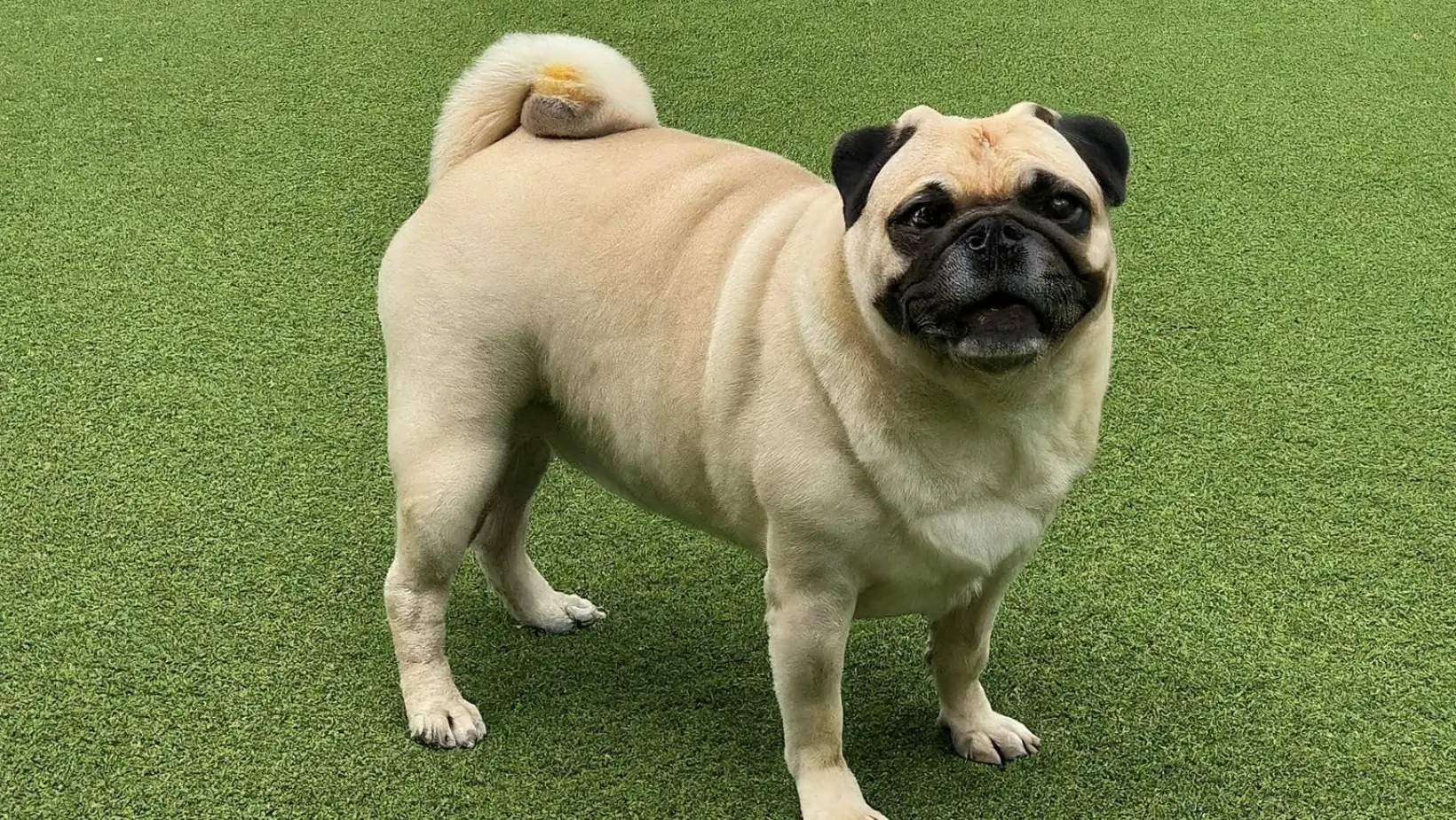Table of Contents
TogglePhysically, all pug varieties are similar in that they all have short legs, a stocky build, and a distinctive expression on their faces that instantly identifies them.
They are also well-known for having a humorous, lighthearted, and amiable disposition.
The hue of their coats essentially distinguishes the several groups within this unusual breed.
Carlino or Pug?
Italian and French people gave their pug-breed dogs the nickname Carlino.
According to historical accounts, these canines bear the name Carlin in honor of the Italian actor Carlo Antonio Bertinazzi (1710–1783).
In the Commedia dell’Arte, a dramatic genre that was popular in Europe from the 16th to the 18th century, Bertinazzi used to portray a figure named Harlequin.
Harlequin’s black mask, which was evocative of a pug’s face, was one of his distinguishing characteristics.
Because of this, in nations such as Spain, pugs are referred to as Carlinos in honor of the actor and his iconic persona.
Because the dog resembles a human fist, they are also known by the simple name Pug, which is derived from the Latin pugnus, meaning fist.
The history of the Pug breed
One of the earliest known dog breeds is the pug.
Its beginnings can be traced back to 400 BC or earlier in ancient China.
Chinese emperors cherished these dogs as pets, and they received exquisite care and living quarters in opulent palaces.
Compared to modern pugs, the ancient Chinese pugs were marginally bigger.
It is stated that these canines were employed in religious rites and that they were so prized that they had their guards.
The pug was eventually introduced to other regions of Asia, such as Tibet, where monks practiced Buddhism and kept them. The pug arrived in Europe in the sixteenth century as a result of trade between China and Europe.
The pug gained official status as the official dog of the House of Orange in the Netherlands, where a specimen of the breed is said to have saved Prince William of Orange’s life in 1572 by warning him of an impending attack. They swiftly gained popularity among the European aristocracy.
The pug was introduced to England in the 17th century by Mary of Modena, the wife of King Charles II, who had a deep affection for these canines.
The pug was extremely popular during Charles II’s reign, and rumor has it that the king never left the house without at least two of his cherished pugs.
The pug evolved into the contemporary breed that we know today in Europe throughout the ensuing decades as it was standardized and developed.
The International Cynological Federation (FCI) recognized the breed in 1966 after it had first been acknowledged by the American Kennel Club (AKC) in 1885.
Pug breeds
Despite being of the same breed, pugs can differ slightly in terms of coat color and other minor characteristics.
Based on the color of their coat, the following are the primary categories of pugs:
Black Pug: True to their name, these dogs have entirely black fur. They still retain all the features of a pug, even though their wrinkles and folds might not be as noticeable as those of lighter-colored pugs.
Fawn Pug: The fur of these pugs is light-colored, ranging from a very light sandy tone to a deeper gold color.
In contrast to the light hue of the rest of their body, fawn pugs typically have a black mask on their faces.
A silver-gray coat distinguishes the Silver Pug from the Fawn Pug. They typically wear a black mask as well.
Brindle Pug: The coats of these pugs are patterned in stripes or brindles. A hue darker than the backdrop or black can be used for the stripes.
Albino Pug: Some pugs are albino, notwithstanding their rarity. Since they lack pigmentation, their eyes are typically a pale tint and their fur is white.
Pug Apricot (also known as Peach or Apricot): These dogs have fawn-colored coats that lean more toward orange or apricot. Like fawn pugs, their masks are often black.
It’s crucial to note that these variations are all just variations in coat color.
All pugs should be the same in terms of appearance and temperament, regardless of color.




